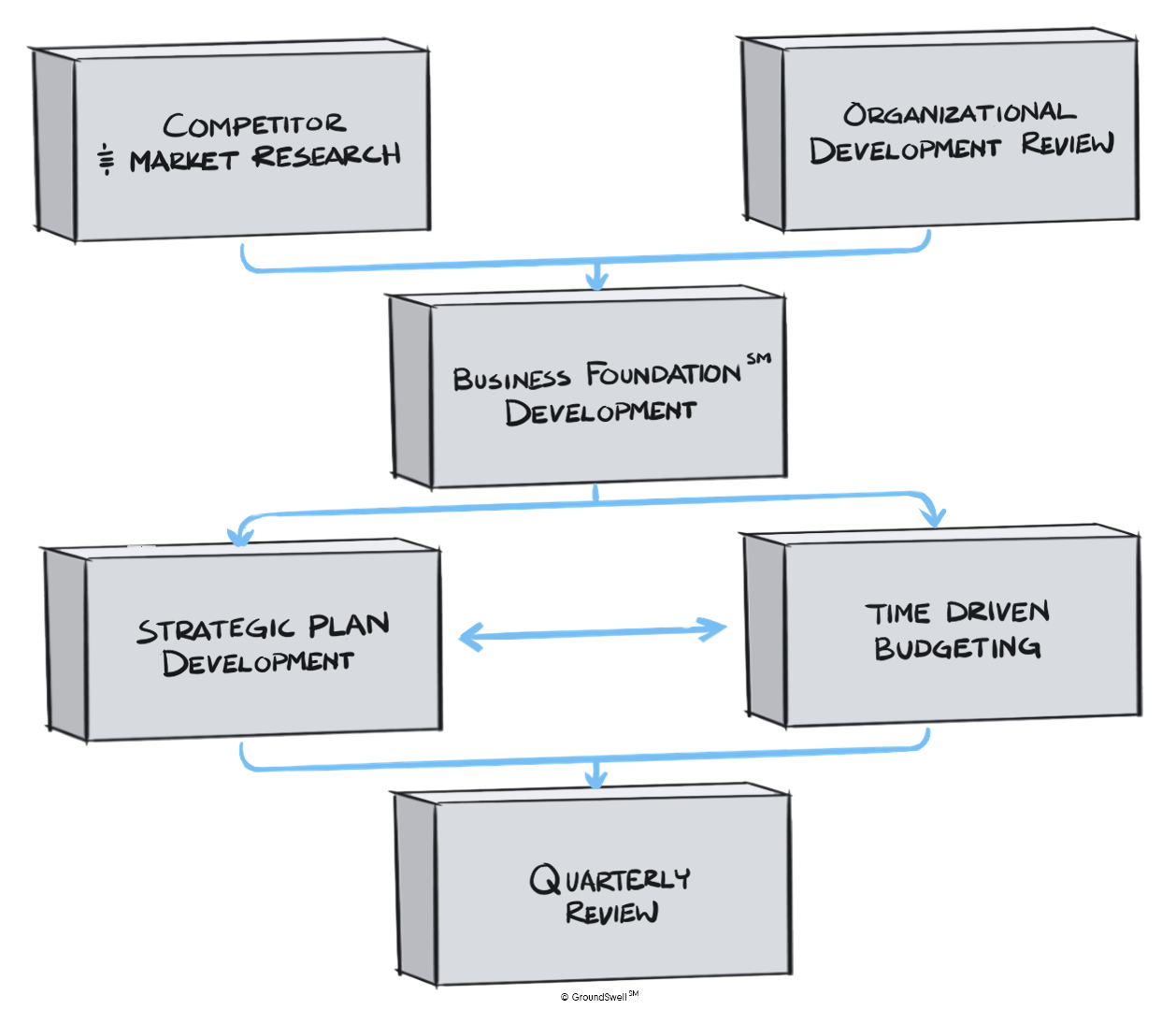Strategic planning
How does it work?
Our six-step planning process ties directly to our financially predictive Fractal Flywheel of Organizational DevelopmentSM. It includes an in-depth market and product competitive assessment utilizing our Fractal Flywheel of Strategy DevelopmentSM as well as a current organizational review/assessment using our organizational development surveys. We also work with you and your team to create white board drawings/sketches to clearly define who you are, where you're going and how you’re different.
From there we create seven to eight priority objectives focused on developing the key integrated factors or key result areas (“KRAs”) in our Fractal Flywheel of Organizational DevelopmentSM to ensure you execute on your Business FoundationSM and proactively minimize, if not eliminate, any Changing PainsSM in your organization.
An objective is a clearly defined area of focus that defines your company’s strategy as well as the key work to be done in that area.
We also develop five to seven SMART goals per priority objective. A SMART goal is a goal that is S – Specific, M – Measurable, A – Accountable (one individual is ultimately responsible for getting it done), R – Realistic and T – Time Stamped (there is a specific due date).
We then integrate your plan with our time-driven activity-based costing (“TDABC”) budgeting process, including data visualization software. From there we manage both on GroundSwell ONESM, our enterprise project management software, so you can simultaneously manage these long-term objectives and goals and your team’s day-to-day tasks.
The chart to the right visualizes the specific integrated steps we complete during our onboarding process for long-term partnerships and/or capital investments. We have found this repeatable process ensures we’re fully aligned with our long-term partners before we become partners.
This process typically takes three to six months and allows us both to be sure we have shared beliefs and values and are clear on our respective roles going forward. We both need to be able to focus on what we do best including having both the responsibility and authority to do so.
We accomplish alignment in our partnerships by utilizing our role description process that ties each individual’s overall mission, key objectives and SMART goals to our overall plan as well as the amount of time allocated to each individual’s role to our time-driven activity-based costing (“TDABC”) budget.
That way every SMART goal in our plan is assigned to an individual, and each individual is budgeted the necessary time to accomplish their overall mission as well as specific goals.
Strategic Planning Process

Business FoundationSM

